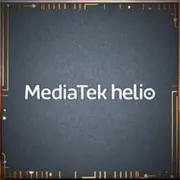MediaTek Helio G85

MediaTek Helio G85: An Affordable Processor for Everyday Tasks and Light Gaming
(Relevant as of April 2025)
Introduction
In the world of mobile technology, the balance between price and performance remains a key factor for most users. MediaTek Helio G85, introduced back in 2020, continues to hold its ground in the budget segment thanks to its reliability and optimization. Despite the emergence of more modern chips, this processor remains popular in devices priced at $150–250. In this article, we will explore why Helio G85 has earned user trust, its strengths and weaknesses, and who it is suitable for in 2025.
1. Architecture and Process Technology: The Foundation of Stability
CPU: 8 Cores with Task Distribution
Helio G85 is built on a hybrid Big.Little architecture:
- 2 high-performance Cortex-A75 cores with a clock speed of up to 2.0 GHz for demanding tasks (gaming, rendering).
- 6 energy-efficient Cortex-A55 cores with a clock speed of up to 1.8 GHz for background processes and power saving.
This division allows for effective load distribution, avoiding overheating and excessive battery drain.
GPU: Mali-G52 MP2
The Mali-G52 MP2 graphics processor, with a clock speed of 1000 MHz, supports Vulkan and OpenGL ES 3.2 APIs, ensuring compatibility with most mobile games. However, two compute units (MP2) limit performance in resource-intensive projects.
12 nm Process Technology: Pros and Cons
The 12-nanometer process, although outdated by 2025, provides acceptable energy efficiency (TDP — 5 W). For comparison, modern chips utilize 6–7 nm processes, which help reduce heating. Nevertheless, Helio G85 manages basic tasks without critical overheating, especially in devices with passive cooling.
2. Real-World Performance
Gaming: Moderate Expectations
- Geekbench 6: Single-Core — 416, Multi-Core — 1338.
- AnTuTu 10: 275,547 points.
These scores allow for comfortable gameplay in PUBG Mobile and Call of Duty: Mobile at medium settings (30–40 FPS). However, in games with advanced graphics, like Genshin Impact, the frame rate can drop to 20–25 FPS even at low settings.
Multimedia: Full HD and HDR
The processor supports displays with a resolution of up to 2520×1080 pixels and HDR10. This makes it suitable for watching videos on streaming services (Netflix, YouTube) without noticeable lags.
AI Features: Basic Capabilities
The built-in APU (AI Processing Unit) facilitates features like scene recognition in cameras, background blur, and charge optimization. However, for complex tasks such as real-time video processing or AR applications, the power is insufficient.
Power Consumption and Heating
Thanks to the 12 nm process and optimization of the Cortex-A55 cores, smartphones equipped with Helio G85 demonstrate good battery life (8–10 hours of screen time with a 5000 mAh battery). Heating rarely exceeds 40–42°C even during extended gaming sessions.
3. Built-In Modules: Basic Connectivity
- Modem: 4G LTE Cat-7 (speed up to 300 Mbps), without 5G support.
- Wi-Fi: 802.11ac (Wi-Fi 5) at 2.4/5 GHz.
- Bluetooth: 5.0 with support for AAC and LDAC codecs.
- Navigation: GPS, GLONASS, Galileo, BeiDou.
These parameters meet the standards of 2022–2023. In 2025, the lack of 5G and Wi-Fi 6 may become a drawback for users looking to "future-proof" their purchase for new networks. However, for regions where 5G is not yet widespread, this is not critical.
4. Comparison with Competitors
MediaTek Helio G85 vs Qualcomm Snapdragon 680
- Snapdragon 680 (6 nm) wins in energy efficiency but falls behind in GPU performance (Adreno 610 vs Mali-G52 MP2).
- In gaming, Helio G85 is more stable, while Snapdragon 680 handles multitasking better.
MediaTek Helio G85 vs Unisoc T618
- Unisoc T618 (12 nm) is close in specifications, but its Mali-G52 MP2 operates at a lower frequency (850 MHz), which reduces FPS in games.
Generations of MediaTek
- Helio G90T (2019) is more powerful with CPU clocks up to 2.05 GHz and Mali-G76 MC4 GPU, but it heats up more.
- Helio G88 (2021) is a minimal update to G85 with support for cameras up to 108 MP.
Conclusion: Helio G85 remains optimal for balancing price and performance but lags behind newer chips like MediaTek Dimensity 700 (7 nm, 5G).
5. Use Scenarios
Gaming
Suitable for casual games (Angry Birds, Candy Crush) and shooters at medium settings. For streaming games via Xbox Cloud or GeForce Now, a stable Wi-Fi connection is necessary.
Everyday Tasks
- Smooth operation in social networks, messengers, and browsers.
- Simultaneous use of 2-3 applications (e.g., Spotify + maps + Telegram).
Photo and Video
- Supports cameras up to 48 MP (or dual mode with 16 MP + 16 MP).
- Records 4K@30 FPS video, but without EIS stabilization at this resolution (only in 1080p).
Ideal for daytime shooting; night shots require software optimization from the smartphone manufacturer.
6. Pros and Cons
Advantages:
- Low-cost devices.
- Good battery life.
- Sufficient performance for basic tasks.
Disadvantages:
- No support for 5G and Wi-Fi 6.
- Limitations in demanding games.
- Outdated 12 nm process technology.
7. Practical Tips for Choosing a Smartphone
- RAM: at least 4 GB (better 6 GB for gaming).
- Screen: IPS or AMOLED at 60–90 Hz (the latter improves interface smoothness).
- Battery: at least 5000 mAh to compensate for the energy consumption of the 12 nm chip.
- Camera: look for models with Sony or Samsung sensors and software stabilization.
Examples of 2025 Devices:
- Xiaomi Redmi Note 12S ($180): 6.5" AMOLED, 6/128 GB, 50 MP camera.
- Realme C55 Pro ($160): 5000 mAh, 90 Hz display, 8 GB RAM.
8. Final Conclusion: Who is Helio G85 Suitable For?
This processor is the choice for those who:
- Are not willing to pay extra for "premium" features.
- Use their smartphone for social media, calls, and light gaming.
- Value long battery life.
The main benefits are stability, time-tested reliability, and an affordable price. However, if you need 5G, 4K streaming, or AAA games, consider chips at the level of MediaTek Dimensity 900 or Snapdragon 7 Gen 2. But for everyday tasks, Helio G85 remains a reliable option even in 2025.
P.S. When purchasing, check the smartphone's release date: models from 2023-2024 may be sold at a discount, but their software support will soon end. It's better to choose devices from 2024-2025 with guaranteed updates until 2026.
Basic
6x 1.8 GHz – Cortex-A55
GPU Specifications
Connectivity
Memory Specifications
Miscellaneous
Benchmarks
Phones with Helio G85









Comparison of Devices with Helio G85
Compared to Other SoC
Related SoC Comparisons
Share in social media
Or Link To Us
<a href="https://cputronic.com/soc/mediatek-helio-g85" target="_blank">MediaTek Helio G85</a>
